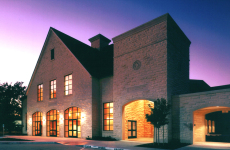Last month, Rice University reported that its total applications for its incoming freshman class had reached an all-time record of 17,715 – which represents an increase of 15 percent over 2013.
The number of applications has roughly doubled since 2007, the college reported in a press release.
Rice is seeking to fill 945 spots for the first-year cohort in the fall of 2014.
Rice administrators have suggested a number of factors in the steady rise in applications over the last decade.
Chris Muñoz, vice president for enrollment at Rice, suggested that the university is no longer a “best-kept secret,” high-achieving regional university, noting that applications are increasing from both American students who live outside of Texas, as well as international students. He also said that the quality of applicants was increasing noticeably.
Muñoz said that the school’s low student-to-faculty ratio, strong research opportunities and need-blind admissions policy made the school attractive for a wide variety of applicants.
He also emphasized that the university’s recent building expansion, which has included the construction of two residential colleges, a recreation center, expanded facilities for engineering and bioscience and a new physics building, as items that might attract new students to Rice.
However, although Rice is justifiably regarded as a very desirable university to attend, its increase in applications mirrors a national trend. The doubling of applications (and increase in applicant quality) since 2007 are roughly in line with what’s happening at many other high-end schools – for example UCLA and Columbia.
So what’s really happening here? The major factor is that highly accomplished high school students are applying to more and more selective colleges to increase their odds of getting into one good school. In 2000 about two-thirds of high-school seniors applied to three or more colleges. In 2013 percentage was 79 percent, noted Dan Edmonds, Vice President of Research and Development at Noodle.org ,in a Time Magazine column. The number of students applying to seven or more colleges increased from 12 to 29 percent over the same period.
Edmonds argues that the increasing popularity of the Common Application, which is now accepted by nearly 500 colleges and universities in the United States, including Rice, has greatly eased the burden of applying to a large number of schools. Instead of needing to fill out multiple complicated forms for a large number of colleges, applicants need to input all their information once, saving large amounts of time.
“All of the college counselors at my school recommended Common app. It was seen as the easiest and most common way to apply to schools,” Rachel Mitchell, a junior at Rice majoring in political science and linguistics, said.
Mitchell, who is from Connecticut and transferred from Vanderbilt after her freshman year, used the Common Application when she applied for transfer to the University of Chicago, Rice and Georgetown. She also applied to Tulane, which does not accept the Common Application.
She added it greatly reduced the burden of applying to a large number of schools.
“It was easier to keep track of, especially in an over-achieving high school where students would apply to over ten schools. It was nice to have all the information there and only have to worry about supplemental materials for each school,” Mitchell said.

























